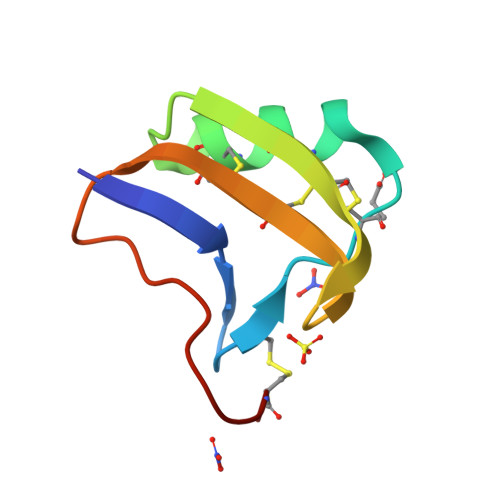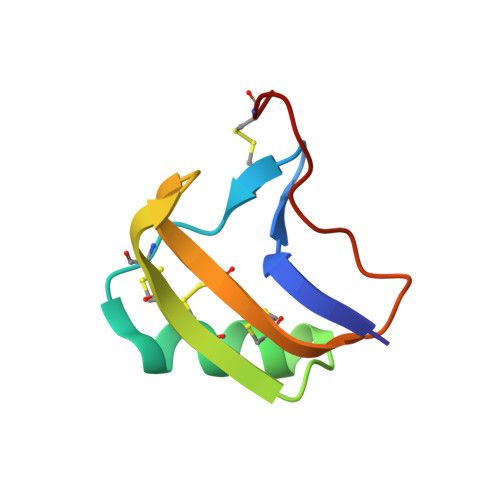Molecular basis of the high insecticidal potency of scorpion alpha-toxins.
Karbat, I., Frolow, F., Froy, O., Gilles, N., Cohen, L., Turkov, M., Gordon, D., Gurevitz, M.(2004) J Biological Chem 279: 31679-31686
- PubMed: 15133045
- DOI: https://doi.org/10.1074/jbc.M402048200
- Primary Citation of Related Structures:
1SEG - PubMed Abstract:
Scorpion alpha-toxins are similar in their mode of action and three-dimensional structure but differ considerably in affinity for various voltage-gated sodium channels (NaChs). To clarify the molecular basis of the high potency of the alpha-toxin LqhalphaIT (from Leiurus quinquestriatus hebraeus) for insect NaChs, we identified by mutagenesis the key residues important for activity. We have found that the functional surface is composed of two distinct domains: a conserved "Core-domain" formed by residues of the loops connecting the secondary structure elements of the molecule core and a variable "NC-domain" formed by a five-residue turn (residues 8-12) and a C-terminal segment (residues 56-64). We further analyzed the role of these domains in toxin activity on insects by their stepwise construction onto the scaffold of the anti-mammalian alpha-toxin, Aah2 (from Androctonus australis hector). The chimera harboring both domains, Aah2(LqhalphaIT(face)), was as active to insects as LqhalphaIT. Structure determination of Aah2(LqhalphaIT(face)) by x-ray crystallography revealed that the NC-domain deviates from that of Aah2 and forms an extended protrusion off the molecule core as appears in LqhalphaIT. Notably, such a protrusion is observed in all alpha-toxins active on insects. Altogether, the division of the functional surface into two domains and the unique configuration of the NC-domain illuminate the molecular basis of alpha-toxin specificity for insects and suggest a putative binding mechanism to insect NaChs.
Organizational Affiliation:
Department of Plant Sciences, George S. Wise Faculty of Life Sciences, Tel-Aviv University, Ramat-Aviv 69978, Tel-Aviv, Israel.





















